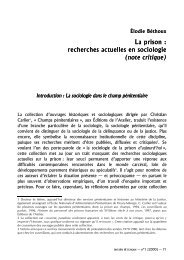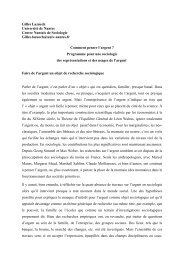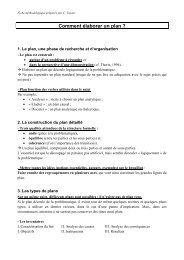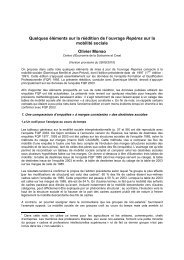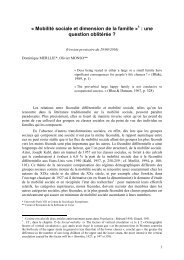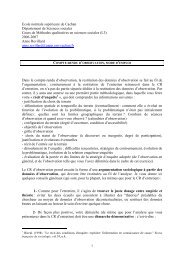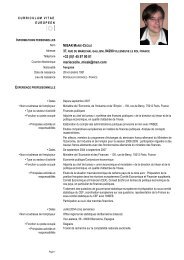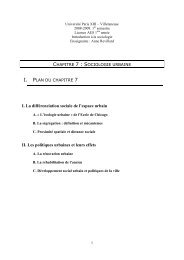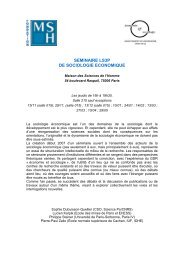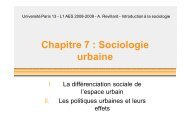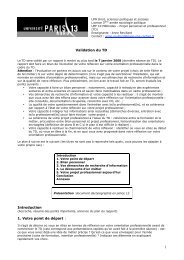DISCUSSION Reply to Bruno Latour David Bloor* - Melissa
DISCUSSION Reply to Bruno Latour David Bloor* - Melissa
DISCUSSION Reply to Bruno Latour David Bloor* - Melissa
You also want an ePaper? Increase the reach of your titles
YUMPU automatically turns print PDFs into web optimized ePapers that Google loves.
<strong>Reply</strong> <strong>to</strong> <strong>Bruno</strong> La<strong>to</strong>ur133between the logic of zero-sum games and the principle of vec<strong>to</strong>r addition (p. 116,note 5). This is just a matter of thinking the thing through properly and keepingdifferent processes and principles separate. Next, consider La<strong>to</strong>ur’s emphasis onthe way scientists work hard <strong>to</strong> give their own favoured theories a greater credibilitythan those of their rivals. This is a plausible empirical claim about scientific behaviour,albeit a rather obvious one. My point is that La<strong>to</strong>ur is wrong <strong>to</strong> treat this asrunning counter <strong>to</strong> the relativism of the Strong Program. He thinks (StrongProgram) symmetry means that all theories have the same credibility, but it doesn’t.To draw attention <strong>to</strong> this error does not involve challenging his facts.Now <strong>to</strong> the all-important question of whether La<strong>to</strong>ur has answered my chargeof misrepresentation. I have already said I do not think he has, but La<strong>to</strong>ur is confidentthat he has ‘entirely vindicated’ himself (p. 120). He reaches this conclusionby simply repeating the old misunderstandings in a slightly different form. Takethe issue of the role of the material world in the construction of knowledge. WhatI called the charge of idealism and La<strong>to</strong>ur the charge of Kantianism is still beingrepeated. This time the misrepresentation depends on a conflation that runs throughouthis reply. Let me explain what that conflation is, where it comes from, and themischief it does.La<strong>to</strong>ur thinks that the highly important and consequential underdeterminationthesis is the same as the claim that experience of the world and the objects in it‘makes no difference’. The Edinburgh School, as he put it, ‘forbids things <strong>to</strong> makea difference <strong>to</strong> our belief system’ (p. 120). This theme of ‘making no difference’is repeated time after time, both in the text and captions <strong>to</strong> diagrams, and is eveninserted in<strong>to</strong> a quotation. As a gloss on the underdetermination thesis, however,this is wrong. Here is how the sorry process gets under way. La<strong>to</strong>ur complainsthat, in the Strong Program, objects and our experience of them, ‘don’t do verymuch’ (p. 116). He accepts, as if it were a generous concession, that the Program’sadherents count themselves as materialists or certain kinds of realist, but he stillposes the question, ‘are these objects allowed <strong>to</strong> make a difference in our thinking?’(p. 117, his emphasis). Without textual justification it is alleged that in the pastthis question has always been answered with a resounding negative. After citinga passage from ‘Anti-La<strong>to</strong>ur’, about the role of the electron in Millikan’s andEhrenhaft’s work, he implies that I am mired in contradiction. He wearily asks menot <strong>to</strong> tell him that objects do and do not play a role, that something ‘makes adifference and that it makes no difference’ (p. 117).La<strong>to</strong>ur’s fallacious moves, and the resulting perversion of the underdeterminationthesis, may be illustrated with a simple example. Imagine some prominent macroobjectthat is a salient feature of the environment of two observers. Call the objectX and the observers O1 and O2. After inspection, O1 declares that X belongs <strong>to</strong>class C1, while after the same kind of inspection O2 puts it in class C2. Theyagree it cannot truly be both, so each thinks the other is wrong. Why do they



